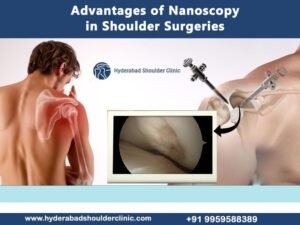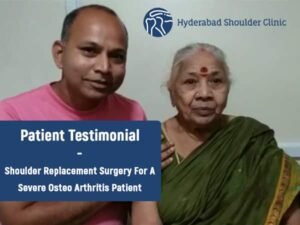Dislocations of the shoulder occur when the top of the arm bone (humerus) pops out of its cup-shaped socket (glenoid). A humerus bone fits into a groove on the shoulder blade in a ball-and-socket joint. There are several ways in which it can move in the body, and it is the most mobile joint in the body. However, muscles, tendons, and ligaments support the shoulder, yet too much mobility can lead to instability.
One of the most common joints in the body to dislocate is the shoulder. It is possible for patients to regain full shoulder functionality within a few weeks with proper treatment. Joint dislocations that happen more than once may make the joint unstable in some patients and can lead to repeated dislocations.
Shoulder dislocations are of two types:
Partial shoulder dislocation or shoulder subluxation
A partial dislocation is a condition in which the upper arm bone head is partially out of its socket. This results in shoulder pain and instability.
Complete shoulder dislocation
A complete dislocation means the head of the upper arm bone is completely out of the socket. Both partial and complete dislocations cause shoulder pain and instability.
Symptoms of shoulder dislocation
In addition to torn ligaments and tendons, a dislocated shoulder can damage nerves as well. Symptoms of a dislocated shoulder include:
- Visible deformity
- Pain
- Muscle spasm
- Swelling
- Redness
- Bruising
- Numbness or weakness in the arm, hand, or fingers
- Difficulty in moving the arm.
Post-surgery physiotherapy
In order to restore the shoulder’s functionality after surgery, physiotherapy is imperative.
Phase I – maximal protection
It is common to place the arm in a sling for four to six weeks following shoulder stabilization surgery.
It is recommended that you apply ice and maintain proper positioning to relieve pain and swelling. During the first few weeks following surgery, you will go through this phase. In the post-immobilization period, gentle range-of-motion and strengthening exercises are performed with the weight of your arm. Cryotherapy, TENS, Ultrasound therapy, and Gentle massage are some other treatments that help to relieve pain, swelling, and stiffness post-immobilization period.
Phase II – moderate protection
Your sling will gradually become less necessary after a month following surgery, and exercises will get gradually harder. Exercises that require extra resistance are gradually increased.
In order to provide stability and support to the shoulder, the core muscles of the shoulder and trunk muscles are strengthened. The shoulder’s range of motion can be restored with joint mobilization techniques. This phase also involves light cardiovascular activities like walking on a treadmill.
Phase III – return to activity
After three months following surgery, this phase starts. In this phase, the therapist concentrates on restoring the strength and functionality of the arm to perform daily activities. You may be not ready to involve in sports and other physically strenuous work that require your arm. In order to make exercises more challenging, modified weightlifting or gym-based training is implemented into your regular activities.
Phase IV – return to occupation/sport
During this phase, the therapist assists the patient in returning to their regular work, sport, and other higher-level activities which begging four after surgery. In order to meet the patient’s needs, exercises are tailored by the therapist according to the patient’s needs. Lifting heavy objects and catching and throwing are among the exercises that certain athletes perform. It is recommended to use a shoulder brace for a safe and gradual return to regular activity levels.
Dr Chandra Sekhar, an Orthopedic shoulder surgeon in Hyderabad helped many individuals to achieve maximum quality of life after a health challenge. As a shoulder specialist, he can diagnose and treat a full range of shoulder disorders, from the acute and chronic to the common and complex. For an appointment with Dr Chandra Sekhar call 99595 88389 and book your slot.





